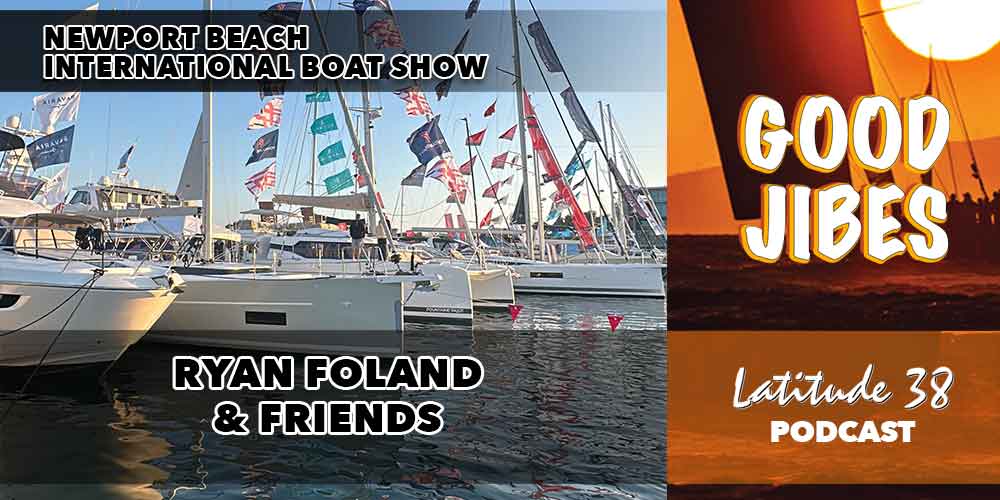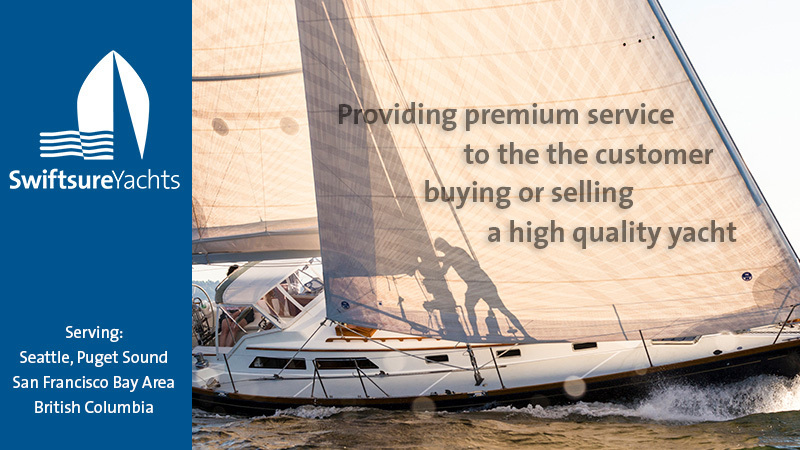
Three Wooden Boat Shows in California This Coming Weekend
Anyone who owns a wooden boat must be certifiably insane. Or that’s what most owners of plastic boats like ours think — until they step aboard. There’s all that varnish, maintenance, and tender loving care required to keep a wooden boat afloat and shipshape. But if you’re not careful, once you step aboard, you risk getting captivated by their spell. The beauty, craftsmanship, sound, art, and aura of a wooden boat convince many that there’s simply nothing better than being the owner and steward of a classic wooden boat.
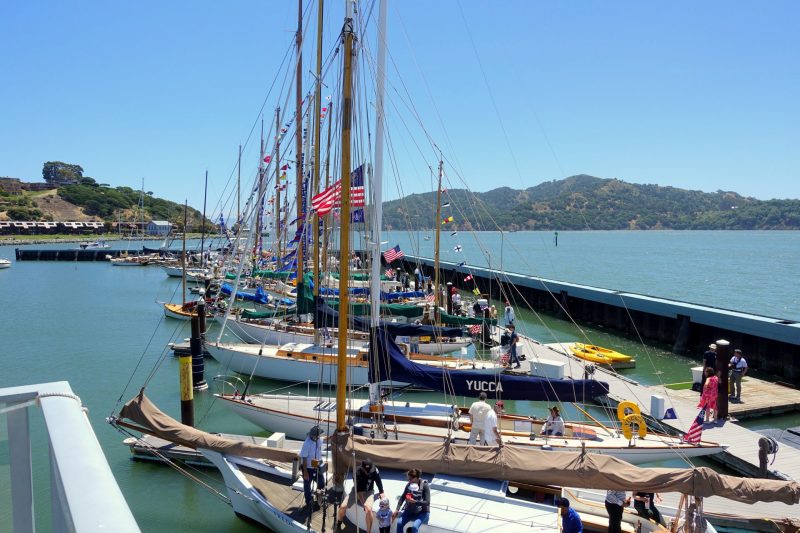
If you’re willing to tempt fate, there are three wooden boat festivals happening along the California coast this coming weekend. The owners of some of the coast’s most beautiful boats are offering them up for boarding in San Francisco Bay, Newport Beach, and San Diego. The three shows are as follows:
San Francisco: The Master Mariners Wooden Boat Show at the Corinthian Yacht Club on Sunday, June 15. Learn more here. See the sights of last year’s show here.
Newport Beach: The Newport Beach Wooden Boat Festival June 13–14. Learn more here.
San Diego: The San Diego Wooden Boat Festival at Koehler’s Boatyard June 14–15. Learn more here.
Wooden boat shows come just once a year. This weekend, Californians have three to choose from.
Good Jibes #195: Newport Beach International Boat Show, Pt. 1
This week we sail to the Newport Beach International Boat Show, held on May 2, where Good Jibes host Ryan Foland goes behind the scenes of the #1 boat show in the United States.
In this episode, you’ll meet surprise co-host Celene Di Stasio and hear interviews with volunteers and visitors, join jaw-dropping boat tours, discover the most exciting new gadgets and accessories, experience the joy of being on brand-new boat after brand-new boat, and all the sounds from a legendary day of fun.
Listen here.
Here’s a small sample of what you’ll hear in this episode:
- Crazy vintage binoculars
- At the entrance of the NBIBS
- Talking to the Shaka Love founders
- On the prowl!
- Friends don’t let friends foil
Listen to the episode on Apple Podcasts, Spotify, and your other favorite podcast spots — follow and leave a 5-star review if you’re feeling the Good Jibes!
Learn more at NBIBS.com and connect with Ryan at Ryan.Online
Save the Date: Owl Harbor’s Nautical Swapmeet, June 14
Hurricane Season Is Right on Time — Are We Prepared?
Hurricane season is nominally considered to be about May 15 to November 30 in the Eastern Pacific. It got started right on time. Though it never reached hurricane stage, the first named cyclonic storm arrived early when Tropical Storm Alvin headed for Cabo on May 30. Then, a week later, came Tropical Storm Barbara, followed by Tropical Storm Cosme. A fourth storm is now possibly forming off Acapulco. As is often the case, it is projected to be an active hurricane season, though forecasters have been wrong before.
A major concern for mariners and coastal communities is the disruption and downsizing going on at NOAA as we head into hurricane season. While the impact of budget and staff cuts can only be evaluated in the future, it is unnerving to many who have been relying on NOAA for accuracy and safety. Hurricanes can be difficult to predict without adding many more variables to the mix. Below is Florida meteorologist John Morales, explaining his concerns as he hopes to prepare his viewers for the season ahead.
Though winds peaked at 60 knots, Tropical Storm Alvin passed near Cabo, bringing rain and wind, though no major damage.
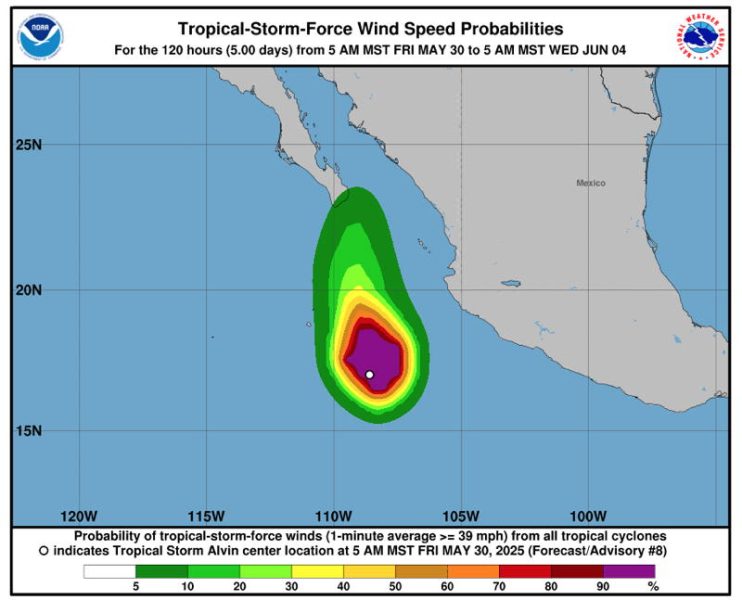
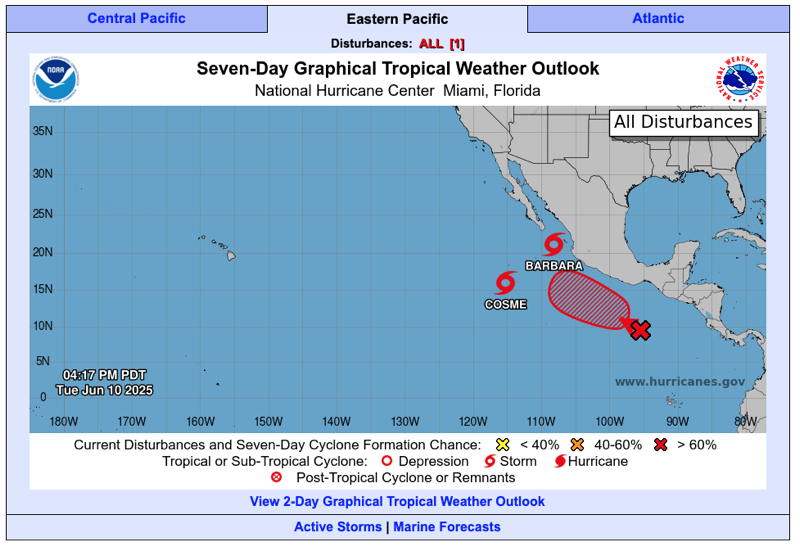
It’s typical to have three or four named storms by the end of June, so the busy start may end up in the normal range. They may all pass without damage, but it is enough to worry boat owners, marinas, insurance companies, and waterfront communities. Everyone paying for boat insurance also feels the impact whenever and wherever hurricanes devastate the boating community. For those with boats left unattended in hurricane regions, now is the time to make sure your sails, dodgers, and anything else creating windage are stowed away for the season.
The cuts coming to NOAA include everything from marine research to atmospheric research, salmon fisheries — including the currently fragile West Coast fishery — and many more critical weather services, with almost no time for any agencies to evaluate or adjust to the reductions. The result is TBD.
Right now, everyone is advised to clip in, hang on to your hat, and prepare for the unknown.
Researching My Grandfather’s Epic Legacy and the ‘Ysabel May’
In the June issue of Latitude 38 we published a letter from Marc English, a sailor in Maine, who is researching his grandfather’s voyage aboard the 1910-built vessel Ysabel May. The letter reads:
To Scott Grindy, harbormaster, San Francisco:
I stopped down to the waterfront the other day, hoping to pick your brain.
On April 20, 1917, my grandfather sailed out of the W. F. Stone & Sons Boatyard on the 100-ft-long schooner Ysabel May. They headed to Tahiti, then north to Christmas Island, where he worked on a coconut plantation, eventually becoming manager. He was marooned there for a year-and-a-half, with two teens from Tahiti, and rescued in November 1919 by Lord Admiral Jellicoe of Her Majesty’s Navy.
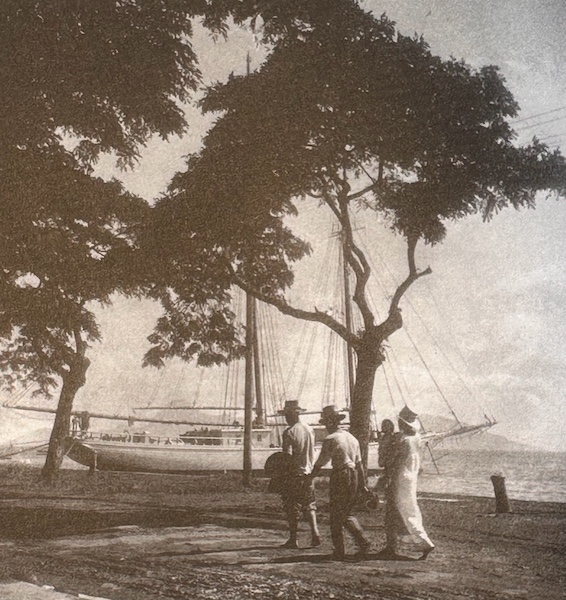
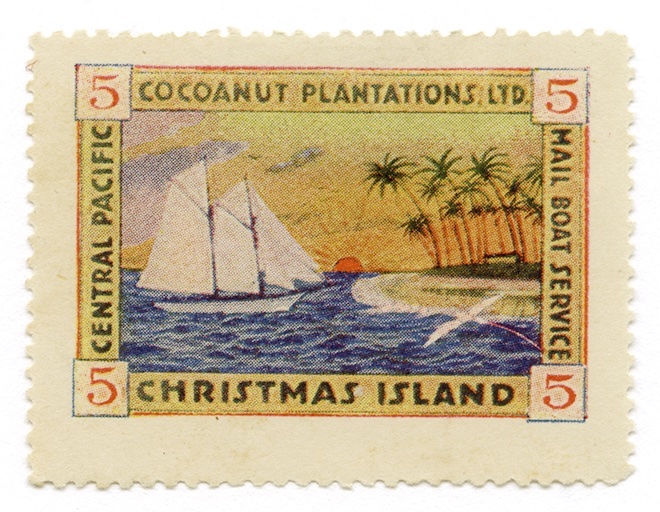
I’m working on a book about his adventure. Two years ago, as passenger, I sailed on a 100-ft vessel from Honolulu to Kiritimati (Christmas Island) while most of the Pacific was still under quarantine. Oh, by the way, Grandpa got marooned due to Spanish flu, of which he was unaware — one more thing to tie past and present together.
Long story longer, I’d love to pick your brain regarding tides, currents, winds, etc,, for sailing from Oakland to the deep blue. Along those lines, I’m wondering if you know of any archival records that may contain that data for that date.
This is the tip of the iceberg, as the intended book will become books, as well as a film. Thanks for the consideration.
Scott Grindy directed Marc to Latitude 38. No doubt Scott was familiar with the Latitude readers’ Brain Trust and believed someone among us could help. How about it? Does anyone have the knowledge and experience to give Marc the answers he needs to accurately portray his grandfather’s journey — “regarding tides, currents, winds, etc., for sailing from Oakland to the deep blue?”
Marc tells us he was aboard the USS Potomac “for a turn around the Bay,” three days earlier than the day his grandfather sailed out of Oakland in 1917, “which means the weather may well have been similar.” The time crossing the Bay on the Potomac would have been considerably less. Marc was told it might take up to five or six hours to tack across to the strait from Oakland, depending on all factors.
Following are images of a couple of newspaper clippings Marc sent us along with his letter.
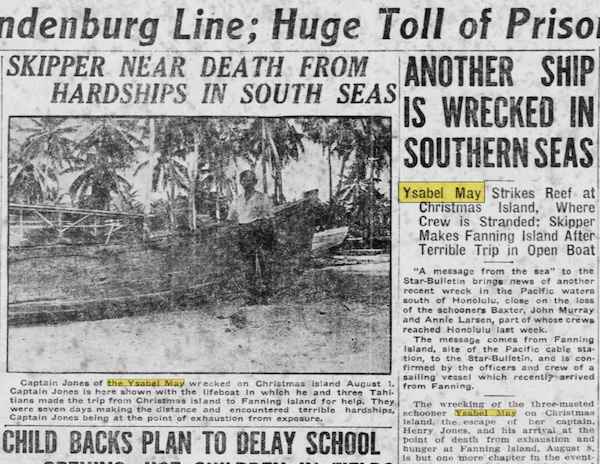
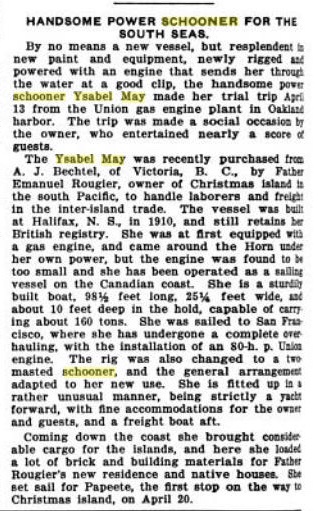
Ending with a fun note, Marc mentioned that on the sail from Honolulu to Kiritimati he met a fellow sailor from Boston, now in Oakland. While the pair were on the island, they started the Kiritimati Yacht Klub. They even have a Facebook page, and a T-shirt with their logo.

USCG Barque ‘Eagle’ Update
According to the published schedule, the barque Eagle is sailing into San Francisco Bay on June 25. She recently docked in Portland, Oregon, to take part in Fleet Week and the Rose Festival, and this weekend will be in Astoria, Oregon. Her schedule is, of course, subject to change, but in the meantime we thought we’d share a little technical information.
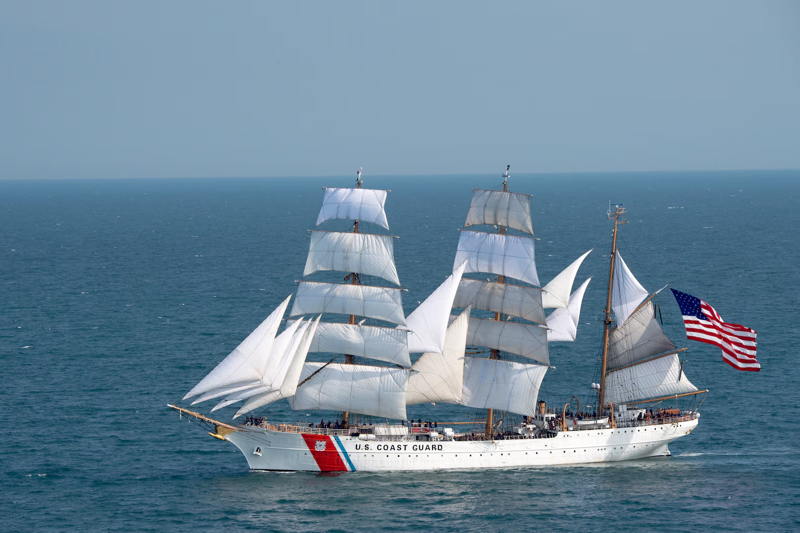
The Eagle is a 295-ft, three-masted barque used as a training vessel for future officers of the United States Coast Guard. She is known as “America’s Tall Ship,” — the largest tall ship flying the Stars and Stripes and the only active square-rigger in US government service.
Here are her stats:
- Length of Eagle: 295 ft. (roughly equivalent to a football field)
- Number of sails: 23
- Sail area: 22,227 sq. ft.
- Tallest mast: 150 ft. (roughly equivalent to a 15-story building)
- Length of rigging: six miles
- Working crew: 55
- Maximum people capacity: 239
- Weight: 1,655 tons (Eagle’s hull and decks are made of steel)
- Speed under sail: 17 knots (20 mph)
- Speed under power: 10 knots (11 mph)
- Gallons of fuel oil: 24,215
- Weight of anchors: 3,860 lbs.
We’ve read that lines to tour the ship can get long. So plan to go early. According to KATU News there is a 2 p.m. cutoff for entry, and people 18 and older will need a Real ID or passport.
Stay tuned for more announcements closer to the date.
Quality Yachts With Premium Service From Swiftsure Yachts
Swiftsure Yachts offers exceptional service, quality brokerage boats and new yachts for world cruising. Visit our website swiftsureyachts.com.

